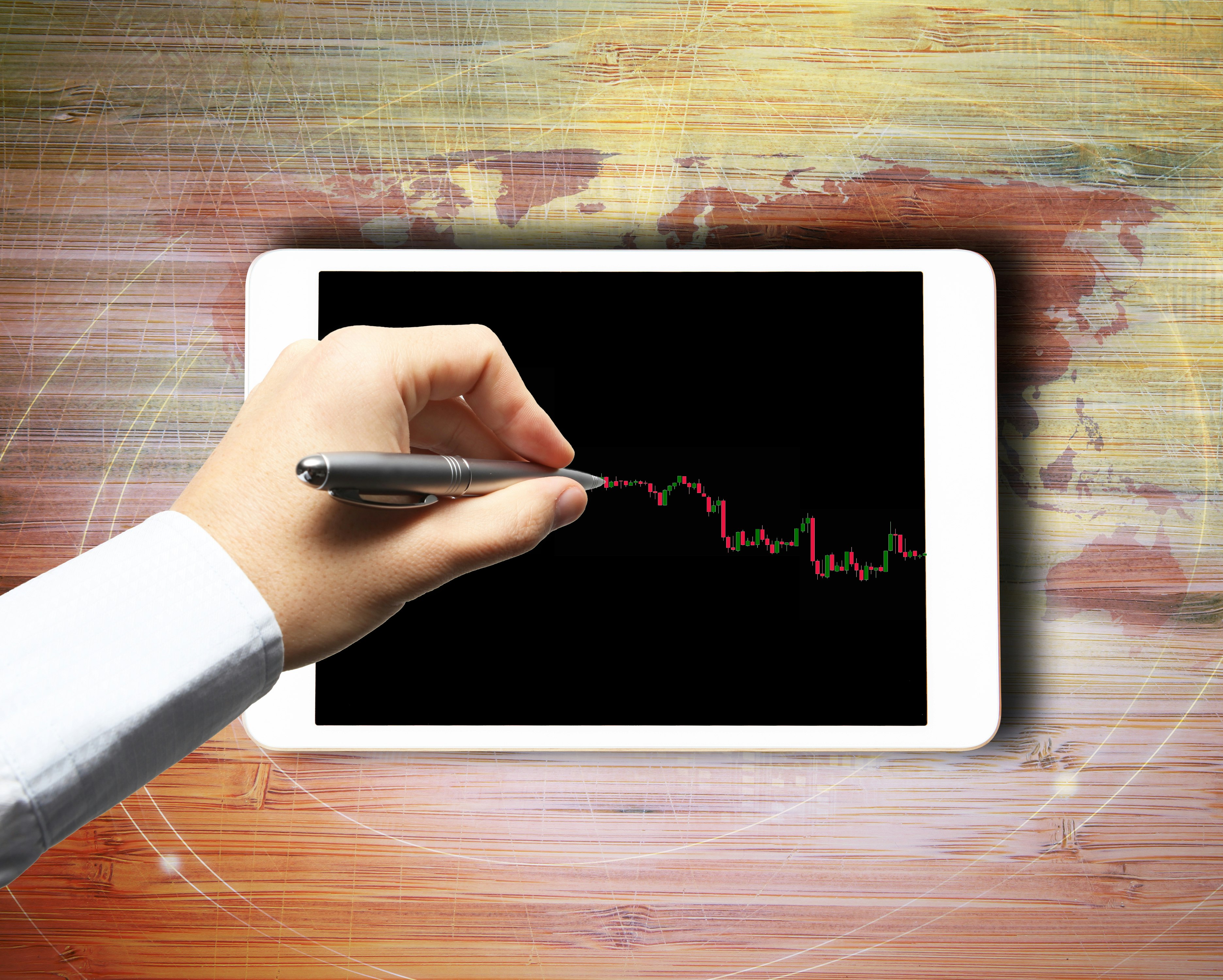Paula Rodriguez
Get to know the best learning styles you can use to boost forex education. Forex trading is an analytical profession that is both exciting and challenging. It revolves around activities that make use of relevant data for effective decision making. From basic forex education to chart analysis, the infinite amount of data means having plenty of opportunities to learn. Because of this, traders can greatly benefit from mastering forex education through a complementing learning style.To take full advantage of forex trading and its possibilities, apply top learning styles to achieve optimal forex education.



What is a learning style?
Every trader has their own strengths and expertise. Together with strategy and skill, each forex trader approaches the market at an individual pace. This includes preferred source of forex education and a learning style to boost the process. A learning style describes the way a person takes in educational material as well as experience from any new endeavour. It characterises a learner’s personal preference and strength when it comes to acquiring new information.Based on studies conducted by Journal of Online Learning and Teaching, learning styles are determined by a learner’s perception, attitude and behavior. These eventually influence comprehension of concepts and final performance. To become a successful trader, be sure to find your personal learning style and ensure the quality of your forex education.How can learning styles improve forex education?
For long term profitability and constant growth, determine your most effective way of learning. To Build a Strong Trading Career Through Good Forex Education, it is important to ensure optimal comprehension of trading concepts. By identifying your top learning preference, you can better grasp forex education at a more accelerated pace. Through the combination of your learning style with forex education, you can effectively boost overall performance and further improve skills.Being a performance based career, lessons are also learned from experience. By studying previous trades, you can also take a look at all relevant data and develop the best method to learn. To boost the benefits of quality forex education, take advantage of your dominant learning style and learn from every experience.The 7 types of learning styles
Ultimately, each person’s learning style is based on personal preference or strengths as well as mindset. Over the years, plenty of research has been conducted to conclude the effects of learning speed and educational methods. With today’s easy and fast exchange of data, the amount of information available to us is increasing. Fortunately, this includes valuable data and tools used for successful forex trading.Currently, there are major learning styles and different classifications used by educators and learners alike. Get to know the different learning styles that you can use to manage quality forex education as well as learnings from forex trading:Visual style
A visual style of learning describes someone who prefers illustrations to analyze new data and organize past information. To take in new information, visual learners respond well to visual aids like charts, images and other graphic representations. This type of learner is able to picture out ideas or images in the mind to be able to process or access data. For forex education, traders with a more visual style can benefit from chart analysis and images for learning.During live trades, a visual learner can also use mind mapping. Mind mapping is a visual technique that traders can use to connect concepts to master a strategy or systemize a winning trade.Characteristics of a visual learner
- Good spatial sense
- Technically oriented
- Strong visual memory power
Aural style
An aural learner responds well to sounds. This type of learning style is beneficial for those who can better focus and learn through aural text. Commonly paired with visual and verbal learning, an auditory learner can take in new information by listening to new information or concepts. For forex education, these activities include webinars, podcasts, audio books or trading videos.Characteristics of an aural learner
- Preference of sound or music
- Strength in audiovisual activities
- Uses mnemonic techniques for memory

Verbal or linguistic style
Use of words or expression can signify someone who is a verbal or linguistic learner. Compared to the aural learner, a trader with a more verbal type of learning can benefit greatly from speaking, writing and other similar interactive exercises. Trading activities like forums or discussions, mentorship or classes can greatly aid a verbal learner.For traders with a more verbal learning style, even simple activities like note taking, reading or repetition can encourage better learning. In the long run, these methods can allow traders to better understand forex education more effectively.Characteristics of a verbal learner
- Prefers communication through writing or speaking methods
- Strong verbal skill
- Great interest in vocabulary, verbal exchanges or scripting
Physical style
A physical or kinesthetic type of learning describes the preference to sense of touch and motion. A physical learner responds better with tactile information and interaction rather than verbal or aural text. In other words, traders with a more physical style of learning can excel through hands-on experience. Despite trades being done on a computer, a physical learner can make use of their strengths through a demo account. Being a vital part of forex education, practicing in a demo account is one of the best ways to engage a trader with a more physical learning style. This encourages perceptive capabilities, personal optimization and interpretive skills.Characteristics of a physical or kinesthetic learner
- Expressive through body language
- Prefers physical experiences or activities for learning
- Considers physical feelings for every action
Mathematical or logical style
The mathematical or logical style is one of the best learning methods that traders should take advantage of. Forex trading is an analytical career that requires systemizing, interpreting and evaluating of data from the market. By having a logical style of learning, all forex education can be understood and analyzed with an organized mindset. Whether this is for calculating probabilities or trade management, a mathematical learner is naturally driven to look at the facts and details of incoming information.Characteristics of a logical learner
- Pursues the systematic route when taking action
- Comprehension of patterns
- Organized critical thinkers
Interpersonal style
If you thrive in social situations or peer interactions, you are an interpersonal learner. A trader with an interpersonal style of learning is often more open-minded and analytical. Much like a verbal learner, a social learner can master forex education through communication. Whether via direct mentorship or interactive classes, this learning style describes someone who can learn a lot from the exchange of opinions. For discussions on problem solving or trading concepts, this constant interaction can allow traders to bounce off ideas from others and create a different perspective.Characteristics of a social learner
- Excels in social functions or gatherings
- Prefers the company of inquisitive thinkers
- Learns through group interactions
Intrapersonal style
Being a personal endeavour, some forex traders are more efficient through independent learning or self-study. Compared to a social learner, an intrapersonal or solitary learner prefers to set personal goals and solve problems by themselves. This type of learning style encourages optimal focus and productivity whether during forex education or live trading.Solitary learners also do well from using journals or diaries that allow for contemplation and review of past events. A trader who has a more intrapersonal style of learning can find a forex trading journal highly advantageous. In forex trading, this can be beneficial especially when analysing previous trades.Characteristics of a solitary learner
- Self-reliant and self-analytical of all activities
- Introspective of past or upcoming events
- Focuses greatly on goals and expectations
Determine your learning style for successful forex trading
Before starting your forex education, make sure to establish the learning style you should pursue. Like forex trading strategies, a trader’s learning style is different from the other. Because of this, it is advantageous to determine the learning style that best suits you. Doing this will guide and influence traders towards the type of learning that is most effective. - How to Ace Forex Trading EducationLearning techniques vary from one person to the next. Throughout the years, research on preferred learning has showed that everybody learns in a unique manner. Unlike the learning environment in a classroom, forex trading gives you the opportunity to learn at your own pace and with your preferred methods. By using your preferred learning style, take advantage of the techniques that are better suited for you. If traders master forex education with their ideal learning style, they can understand trading concepts more quickly. Like mastering a notable skill, learning styles can help develop better results from forex education including optimal performance and enhanced memory.With so much information to take in, forex traders can further boost career growth through proper knowledge management combined with the right learning style.


